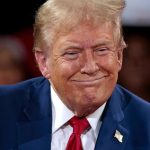Physical Address
304 North Cardinal St.
Dorchester Center, MA 02124
Physical Address
304 North Cardinal St.
Dorchester Center, MA 02124

North Korean leader Kim Jong Un has pledged to intensify efforts to ensure that his country’s nuclear forces are fully prepared for combat, particularly in light of perceived threats from the United States and its allies. This statement comes after North Korea revealed a new platform seemingly aimed at launching more advanced intercontinental ballistic missiles (ICBMs) that could reach the mainland U.S.
Recent analysis suggests that Kim may ramp up provocative weapons tests before the U.S. presidential election in November. Additionally, North Korea has resumed its practice of sending large balloons filled with materials towards South Korea, a method reminiscent of Cold War-era tactics.
In a speech delivered for the 76th anniversary of his government, Kim characterized the situation as increasingly dire, claiming that North Korea faces “a grave threat” from what he described as the “reckless expansion” of a U.S.-led military alliance in the region, now evolving into a nuclear-oriented coalition. According to North Korean state media, Kim expressed that this scenario necessitates a bolstered military posture for the country.
Kim stated that North Korea would “redouble its measures and efforts to make all the armed forces of the state including the nuclear force fully ready for combat.” This declaration adds to ongoing tensions surrounding military cooperation between the U.S. and South Korea, particularly following the recent signing of defense guidelines aimed at integrating U.S. nuclear capabilities with South Korean conventional forces.
North Korea has reacted vehemently to these guidelines, perceiving them as a pretext for invasion. Despite these claims, U.S. and South Korean officials have repeatedly stated that they harbor no intentions of attacking North Korea.
Since the start of 2022, North Korea has significantly accelerated its weapons testing program as part of a strategy to enhance its capability for strikes against both the U.S. and South Korea. In response, the U.S. and South Korea have expanded military exercises, which North Korea interprets as rehearsals for invasion. Analysts believe that while North Korea may face technological hurdles before achieving long-range nuclear missile capabilities, it likely already possesses the means to strike vital targets in South Korea and Japan.
Many observers speculate that North Korea might initiate nuclear tests or conduct ICBM launches before the U.S. elections to bolster its bargaining position in future negotiations with the U.S. There is a belief that Kim’s regime may seek a more formidable nuclear arsenal to extract concessions, such as legitimate easing of sanctions.
Although there appeared to be no significant demonstrations from North Korea in recognition of this year’s anniversary, the state-run Rodong Sinmun newspaper featured a photograph of Kim inspecting what seemed to be a 12-axle missile launch vehicle—a display that sparked speculation about a new, more powerful ICBM under development. This vehicle would be the most advanced seen from North Korea, surpassing its current Hwasong-17 model, which utilizes an 11-axle platform.
When questioned about these developments, a Pentagon spokesperson declined to provide specific insights into North Korea’s missile capabilities but emphasized ongoing cooperation with regional allies to ensure security and deter any potential attacks. He noted that it is not unusual for North Korea to use the media to signal its intentions globally.
In a series of provocative actions, North Korea launched hundreds of large balloons filled with waste materials towards South Korea over a five-day period, extending a psychological warfare campaign reminiscent of Cold War dynamics. While the balloons primarily contained papers and vinyl, there were no significant reports of damage caused.
This balloon campaign, initiated in late May, was characterized by North Korea as a reaction to South Korean citizens flying propaganda leaflets into its territory using similar balloons. In response, South Korea has resumed its anti-North Korean propaganda loudspeaker broadcasts along the tense borders.
Analysts indicate that North Korea is acutely sensitive to these leafleting efforts and loudspeaker messages, seeing them as a direct threat to its attempts to control information and protect its population of 26 million from outside influences.
Source: Associated Press



